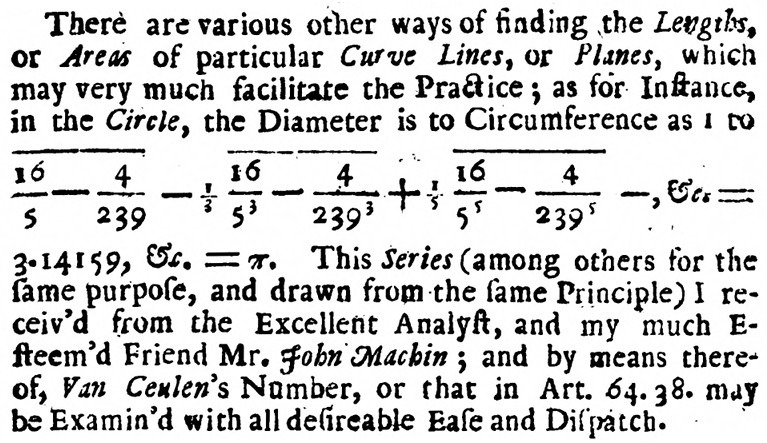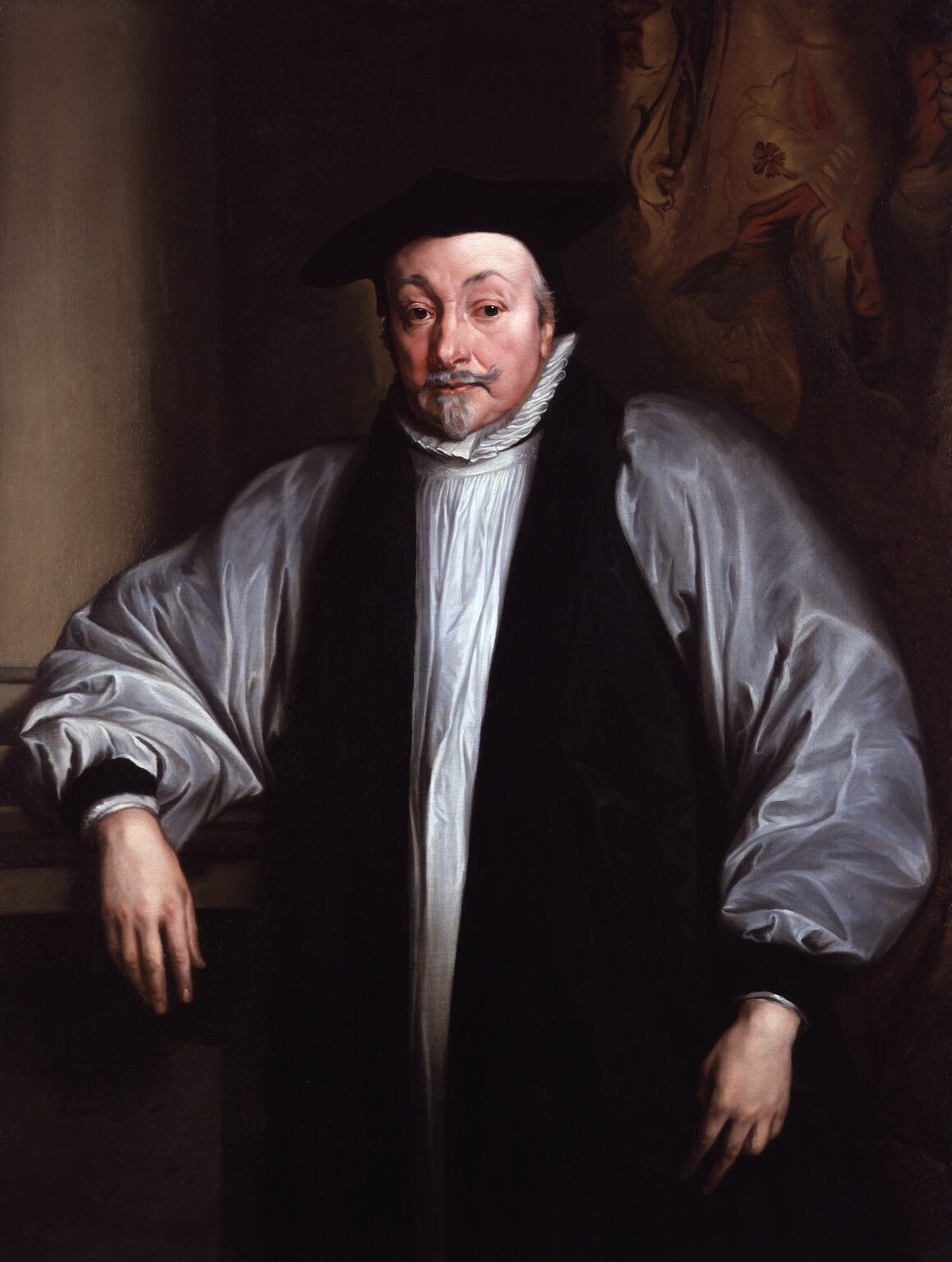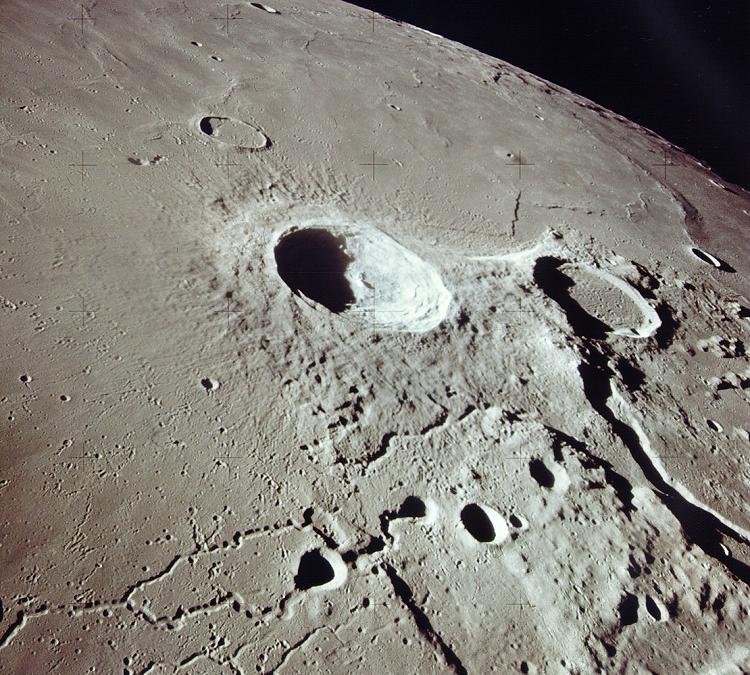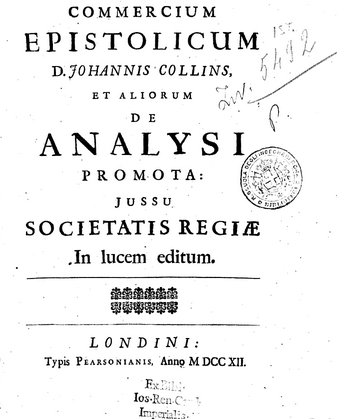|
Samuel Foster
Samuel Foster ( 1600 – July 1652) was an English mathematician and astronomer. He made several observations of eclipses, both of the sun and moon, at Gresham College and in other places; and he was known particularly for inventing and improving planetary instruments. Life A native of Northamptonshire, he was admitted a sizar at Emmanuel College, Cambridge on 23 April 1616, as a member of which he proceeded B.A. in 1619, and M.A. in 1623. On the death of Henry Gellibrand, he was elected Gresham Professor of Astronomy on 2 March 1636, but resigned later in the year and was succeeded by Mungo Murray. In 1641, Murray having vacated the professorship by his marriage, Foster was re-elected on 26 May. During the civil war and Commonwealth he was one of the society of gentlemen who met in London for cultivating the 'new philosophy,' in the group around Charles Scarburgh. In 1646 John Wallis received from Foster a theorem on spherical triangles (two antipodal triangles, that is t ... [...More Info...] [...Related Items...] OR: [Wikipedia] [Google] [Baidu] |
English People
The English people are an ethnic group and nation native to England, who speak the English language in England, English language, a West Germanic languages, West Germanic language, and share a common history and culture. The English identity is of History of Anglo-Saxon England, Anglo-Saxon origin, when they were known in Old English as the ('race or tribe of the Angles'). Their ethnonym is derived from the Angles, one of the Germanic peoples who migrated to Great Britain around the 5th century AD. The English largely descend from two main historical population groups the West Germanic tribes (the Angles, Saxons, Jutes and Frisians) who settled in southern Britain following the withdrawal of the Ancient Rome, Romans, and the Romano-British culture, partially Romanised Celtic Britons already living there.Martiniano, R., Caffell, A., Holst, M. et al. Genomic signals of migration and continuity in Britain before the Anglo-Saxons. Nat Commun 7, 10326 (2016). https://doi.org/10 ... [...More Info...] [...Related Items...] OR: [Wikipedia] [Google] [Baidu] |
Christopher Hill (historian)
John Edward Christopher Hill (6 February 1912 – 23 February 2003) was an English Marxist historian and academic, specialising in 17th-century English history. From 1965 to 1978 he was Master of Balliol College, Oxford. Early life Christopher Hill was born on 6 February 1912, Bishopthorpe Road, York, to Edward Harold Hill and Janet Augusta ('' née'' Dickinson). His father was a solicitor and the family were devout Methodists. He attended St Peter's School, York. At the age of 16, he sat his entrance examination at Balliol College, Oxford. The two history tutors who marked his papers recognised his ability and offered him a place in order to forestall any chance he might go to the University of Cambridge. In 1931 Hill took a prolonged holiday in Freiburg, Germany, where he witnessed the rise of the Nazi Party, later saying that it contributed significantly to the radicalisation of his politics. He matriculated at Balliol College in 1931. In the following year he won th ... [...More Info...] [...Related Items...] OR: [Wikipedia] [Google] [Baidu] |
Alexander Chalmers' General Biographical Dictionary
The ''General Biographical Dictionary'' was a bestselling book of the early 19th century, compiled by British author Alexander Chalmers. It is the work on which Chalmers' fame as a biographer mainly rests. Background The ''Dictionary'' was an enlarged edition of the ''New and General Biographical Dictionary'', which was first published in eleven volumes in 1761. Other editions of this compilation appeared in 1784 and in 1798–1810. The latter, in fifteen volumes, was edited (first five) by William Tooke, and (last ten) by Archdeacon Nares and William Beloe. Then Chalmers's edition had as full title ''The General Biographical Dictionary: containing an historical and critical account of the lives and writings of the most eminent persons in every nation, particularly the British and Irish, from the earliest accounts to the present time''. The first four volumes of this work, in octavo, were published monthly, commencing in May 1812, and then a volume appeared every alternate month t ... [...More Info...] [...Related Items...] OR: [Wikipedia] [Google] [Baidu] |
William Jones (mathematician)
William Jones, FRS (16751 July 1749) was a Welsh mathematician, most noted for his use of the symbol (the Greek letter '' Pi'') to represent the ratio of the circumference of a circle to its diameter. He was a close friend of Sir Isaac Newton and Sir Edmund Halley. In November 1711 he became a Fellow of the Royal Society, and was later its vice-president. Biography William Jones was born the son of Siôn Siôr (John George Jones) and Elizabeth Rowland in the parish of Llanfihangel Tre'r Beirdd, about west of Benllech on the Isle of Anglesey in Wales. He attended a charity school at Llanfechell, also on the Isle of Anglesey, where his mathematical talents were spotted by the local landowner Lord Bulkeley, who arranged for him to work in a merchant's counting-house in London. His main patrons were the Bulkeley family of north Wales, and later the Earl of Macclesfield. Jones initially served at sea, teaching mathematics on board Navy ships between 1695 and 1702, where he becam ... [...More Info...] [...Related Items...] OR: [Wikipedia] [Google] [Baidu] |
Archimedes
Archimedes of Syracuse (;; ) was a Greek mathematician, physicist, engineer, astronomer, and inventor from the ancient city of Syracuse in Sicily. Although few details of his life are known, he is regarded as one of the leading scientists in classical antiquity. Considered the greatest mathematician of ancient history, and one of the greatest of all time,* * * * * * * * * * Archimedes anticipated modern calculus and analysis by applying the concept of the infinitely small and the method of exhaustion to derive and rigorously prove a range of geometrical theorems. These include the area of a circle, the surface area and volume of a sphere, the area of an ellipse, the area under a parabola, the volume of a segment of a paraboloid of revolution, the volume of a segment of a hyperboloid of revolution, and the area of a spiral. Heath, Thomas L. 1897. ''Works of Archimedes''. Archimedes' other mathematical achievements include deriving an approximation of pi, defining and in ... [...More Info...] [...Related Items...] OR: [Wikipedia] [Google] [Baidu] |
Book Of Lemmas
The ''Book of Lemmas'' or ''Book of Assumptions'' (Arabic ''Maʾkhūdhāt Mansūba ilā Arshimīdis'') is a book attributed to Archimedes by Thābit ibn Qurra, though the authorship of the book is questionable. It consists of fifteen propositions (lemmas) on circles. History Translations The ''Book of Lemmas'' was first introduced in Arabic by Thābit ibn Qurra; he attributed the work to Archimedes. In 1661, the Arabic manuscript was translated into Latin by Abraham Ecchellensis and edited by Giovanni A. Borelli. The Latin version was published under the name ''Liber Assumptorum''. T. L. Heath translated Heiburg's Latin work into English in his ''The Works of Archimedes''. A more recently discovered manuscript copy of Thābit ibn Qurra's Arabic translation was translated into English by Emre Coşkun in 2018. Authorship The original authorship of the ''Book of Lemmas'' has been in question because in proposition four, the book refers to Archimedes in third person; however, it ... [...More Info...] [...Related Items...] OR: [Wikipedia] [Google] [Baidu] |
John Greaves
John Greaves (1602 – 8 October 1652) was an English mathematician, astronomer and antiquarian. Educated at Balliol College, Oxford, he was elected a Fellow of Merton College in 1624. He studied Persian and Arabic, acquired a number of old books and manuscripts for archbishop William Laud (some still in Merton College Library), and wrote a treatise (in Latin) on the Persian language. He travelled in Italy and the Levant from 1636 to 1640 and made a survey of the Great Pyramid of Giza. He was Gresham Professor of Geometry at Gresham College, London, and Savilian professor of astronomy at Oxford University, and collected astrolabes and astronomical measuring devices (now in the Museum of the History of Science, Oxford). He was particularly interested in the study of weights and measures, and wrote a treatise on the Roman foot and denarius, and was a keen numismatist. In 1645 he attempted a reform of the Julian calendar, which was not adopted. During the English Civil War he supp ... [...More Info...] [...Related Items...] OR: [Wikipedia] [Google] [Baidu] |
On The Sizes And Distances (Aristarchus)
''On the Sizes and Distances (of the Sun and Moon)'' ( grc, Περὶ μεγεθῶν καὶ ἀποστημάτων ��λίου καὶ σελήνης}) is widely accepted as the only extant work written by Aristarchus of Samos, an ancient Greek astronomer who lived circa 310–230 BCE. This work calculates the sizes of the Sun and Moon, as well as their distances from the Earth in terms of Earth's radius. The book was presumably preserved by students of Pappus of Alexandria's course in mathematics, although there is no evidence of this. The '' editio princeps'' was published by John Wallis in 1688, using several medieval manuscripts compiled by Sir Henry Savile. The earliest Latin translation was made by Giorgio Valla in 1488. There is also 1572 Latin translation and commentaryby Frederico Commandino. Symbols The work's method relied on several observations: * The apparent size of the Sun and the Moon in the sky. * The size of the Earth's shadow in relation to the Moon du ... [...More Info...] [...Related Items...] OR: [Wikipedia] [Google] [Baidu] |
Aristarchus Of Samos
Aristarchus of Samos (; grc-gre, Ἀρίσταρχος ὁ Σάμιος, ''Aristarkhos ho Samios''; ) was an ancient Greek astronomer An astronomer is a scientist in the field of astronomy who focuses their studies on a specific question or field outside the scope of Earth. They observe astronomical objects such as stars, planets, natural satellite, moons, comets and galaxy, g ... and mathematician who presented the first known Heliocentrism, heliocentric model that placed the Sun at the center of the known universe, with the Earth revolving around the Sun once a year and rotating about its axis once a day. He was a student of Strato of Lampsacus, who was the third head of the Peripatetic school, Peripatetic School in Ancient Greece, Greece. According to Ptolemy, during Aristarchus' time there, he observed the summer solstice of 280 BCE. Along with his contributions to the heliocentric model, as reported by Vitruvius, he created two separate sundials: one that is a flat dis ... [...More Info...] [...Related Items...] OR: [Wikipedia] [Google] [Baidu] |
Epitome
An epitome (; gr, ἐπιτομή, from ἐπιτέμνειν ''epitemnein'' meaning "to cut short") is a summary or miniature form, or an instance that represents a larger reality, also used as a synonym for embodiment. Epitomacy represents "to the degree of." An abridgment differs from an epitome in that an abridgment is made of selected quotations of a larger work; no new writing is composed, as opposed to the epitome, which is an original summation of a work, at least in part. Many documents from the Ancient Greek and Roman worlds survive now only "in epitome," referring to the practice of some later authors (epitomators) who wrote distilled versions of larger works now lost. Some writers attempted to convey the stance and spirit of the original, while others added further details or anecdotes regarding the general subject. As with all secondary historical sources, a different bias not present in the original may creep in. Documents surviving in epitome differ from those su ... [...More Info...] [...Related Items...] OR: [Wikipedia] [Google] [Baidu] |
John Collins (mathematician)
John Collins FRS (25 March 1625 – 10 November 1683) was an English mathematician. He is most known for his extensive correspondence with leading scientists and mathematicians such as Giovanni Alfonso Borelli, Gottfried Leibniz, Isaac Newton, and John Wallis. His correspondence provides details of many of the discoveries and developments made in his time, and shows his activity as an 'intelligencer'. Life He was the son of a nonconformist minister, and was born at Wood Eaton in Oxfordshire, 5 March 1625. Apprenticed at the age of sixteen to Thomas Allam, a bookseller, living outside the Turl Gate of Oxford, he was driven to quit the trade by the troubles of the time, and accepted a clerkship in the employment of John Marr, clerk of the kitchen to the Prince of Wales. From him he derived some instruction in mathematics, but the outbreak of the First English Civil War drove him to sea for seven years, 1642-9, most of which time he spent on board an English merchantman, engaged b ... [...More Info...] [...Related Items...] OR: [Wikipedia] [Google] [Baidu] |
William Leybourn
William Leybourn (16261716) was an English mathematician and land surveyor, author, printer and bookseller. Career as a printer During the late 1640s Robert Leybourn's press in Monkswell Street near Cripplegate, London was occupied with books and pamphlets of a political, martial and millenarian nature. He printed John Arrowsmith's sermon to the houses of parliament, ''England's Eben-ezer'' in 1645, and his ''Great Wonder in Heaven'' in 1647. In 1646 he published a pamphlet ''A Defence of Master Chaloner's Speech'', and an early edition of ''The Marrow of Modern Divinity'' attributed to Edward Fisher: in 1648 appeared ''The Differences in Scotland stil on foot'', and from 1648 an almanack or ''Moderate Intelligencer'' of military affairs entitled ''Mercurius Republicus''. Robert Leybourn gave the apparently fraudulent ascription to Sir William Davenant of Edmund Bolton's historical poem ''London, King Charles his Augusta, or City Royal'' of 1648. He printed Joseph Mede's sermo ... [...More Info...] [...Related Items...] OR: [Wikipedia] [Google] [Baidu] |


_by_Thomas_Degeorge.png)



